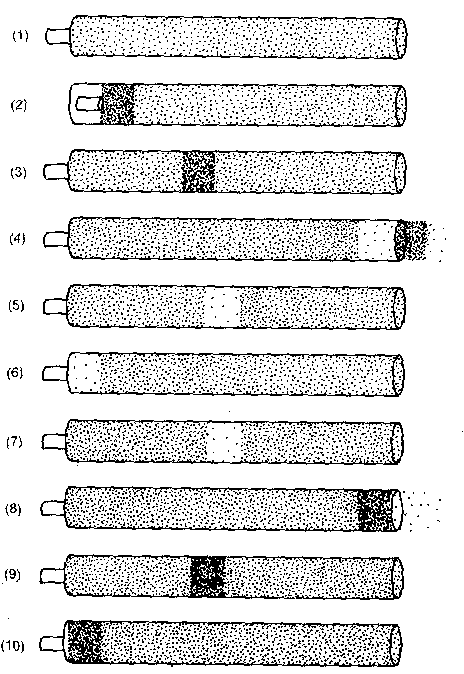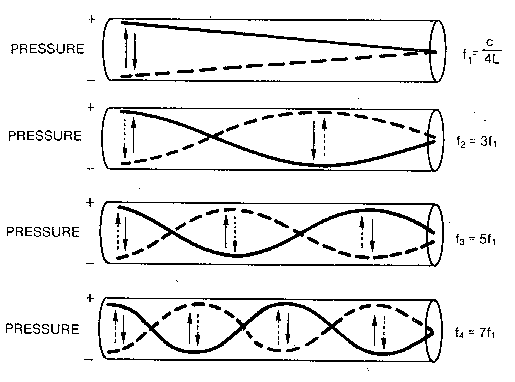
Some examples of resonance:
You can get a standing wave in a half-open tube if the area of
high-pressure reaches the open end at exactly the same time the
closed end returns to normal pressure.

When this happens, the "reflected" waves travelling back from the open end will exactly coincide with the waves travelling forward from the closed end and they will reinforce each other. The tube will resonate. (At a non-preferred frequency the backward-moving waves will sometimes reinforce, sometimes cancel out, the forward-moving waves, and you won't get a standing wave.)
The preferred frequencies for a half-open tube will
be all those frequencies (call them X) such that:
the length of the tube is 1/4 the wavelength of X, or the length of the tube
is 3/4 the wavelength of X, or the length of the tube is 5/4 the wavelength
of X, and so on. (This is often called the "odd-quarters law".)
This means the second resonating frequency will be three times higher
than the first, the next will be five times higher, and so on.

For a half-open tube that is 17 cm long (a typical length for an adult male's vocal tract), the preferred frequencies are 500 Hz, 1500 Hz, 2500 Hz, 3500 Hz, and so on.
We often diagram the frequency response curve of a tube.
This shows for each frequency how much a tube would resonate
if you gave it vibrations at that frequency. The
frequency response curve for a 17 cm long vocal tract held in
neutral position (i.e., the position for schwa) looks like:
